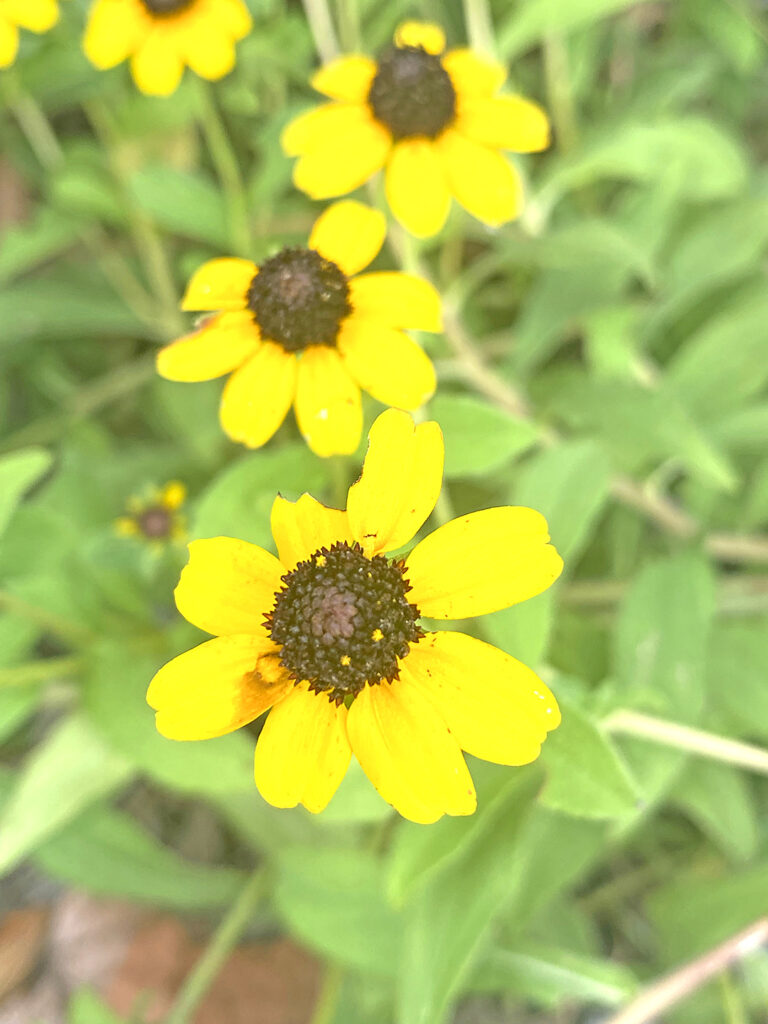Orange coneflower

By LYNN ARTZ, DAVID RODDENBERRY, and SANDY TEDDER
Orange coneflower (Rudbeckia fulgida) is closely related to black-eyed susan (Rudbeckia hirta) but is far less common in Florida. It occurs only in the eastern panhandle and Big Bend region. Both have yellow-orange daisy-like flowers with purple-brown flattened dome centers. Both have hairy stems but the hair is less bristly on orange coneflower. Whereas black-eyed susan is an annual, orange coneflower is a perennial. It spreads slowly through underground stems to form large clumps. Easy and trouble-free, it prefers somewhat moist soil in full sun and grows 2-3 feet tall. Orange coneflower is a larval host for the silvery checkerspot butterfly. Its many bright flowers attract and provide nectar for bees and butterflies. Small birds eat the seeds. Orange coneflower welcomes visitors at the entrance to Sopchoppy Depot Park.
We are re-running this article from last week because we used the wrong photo. – Editor


